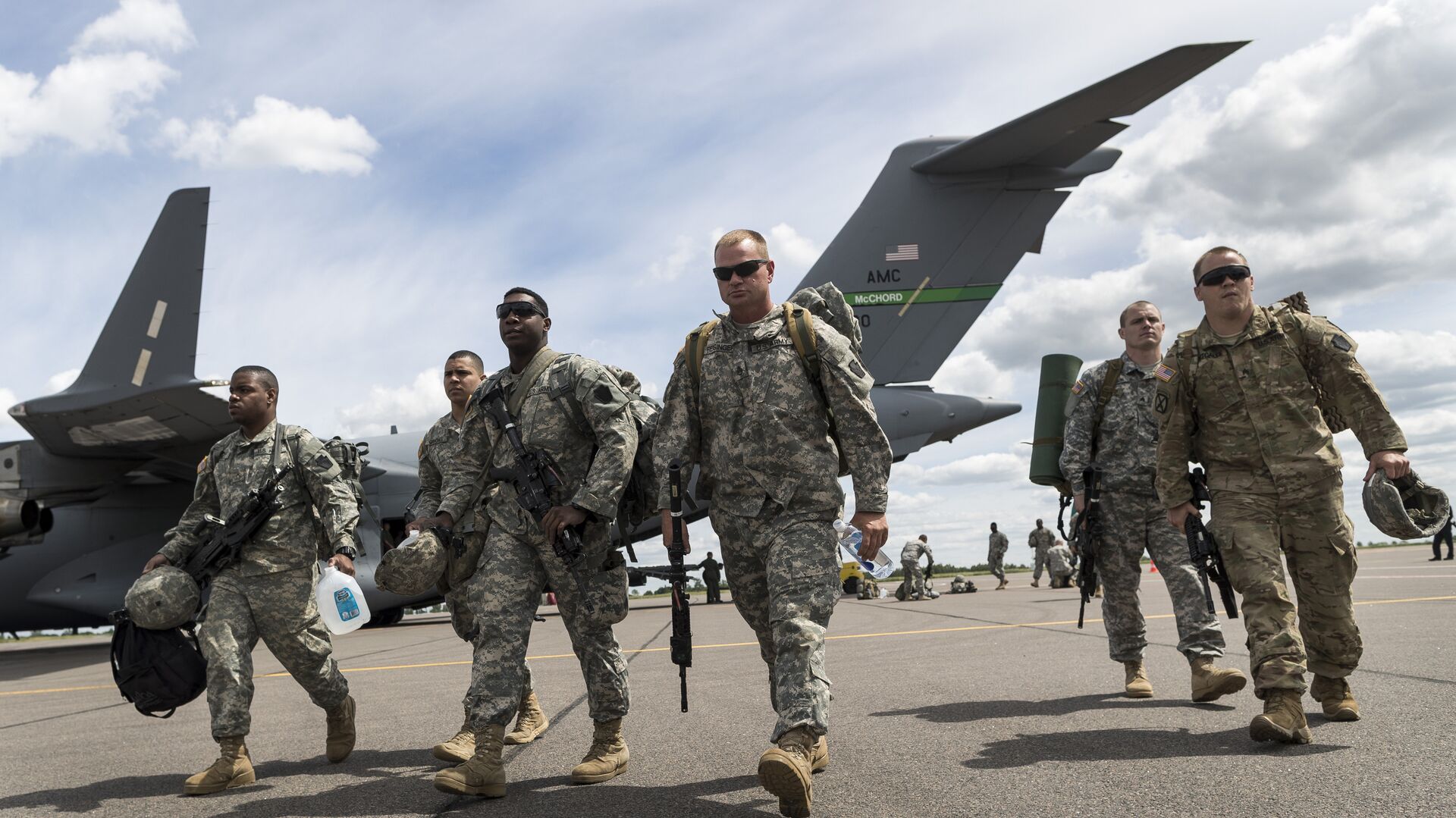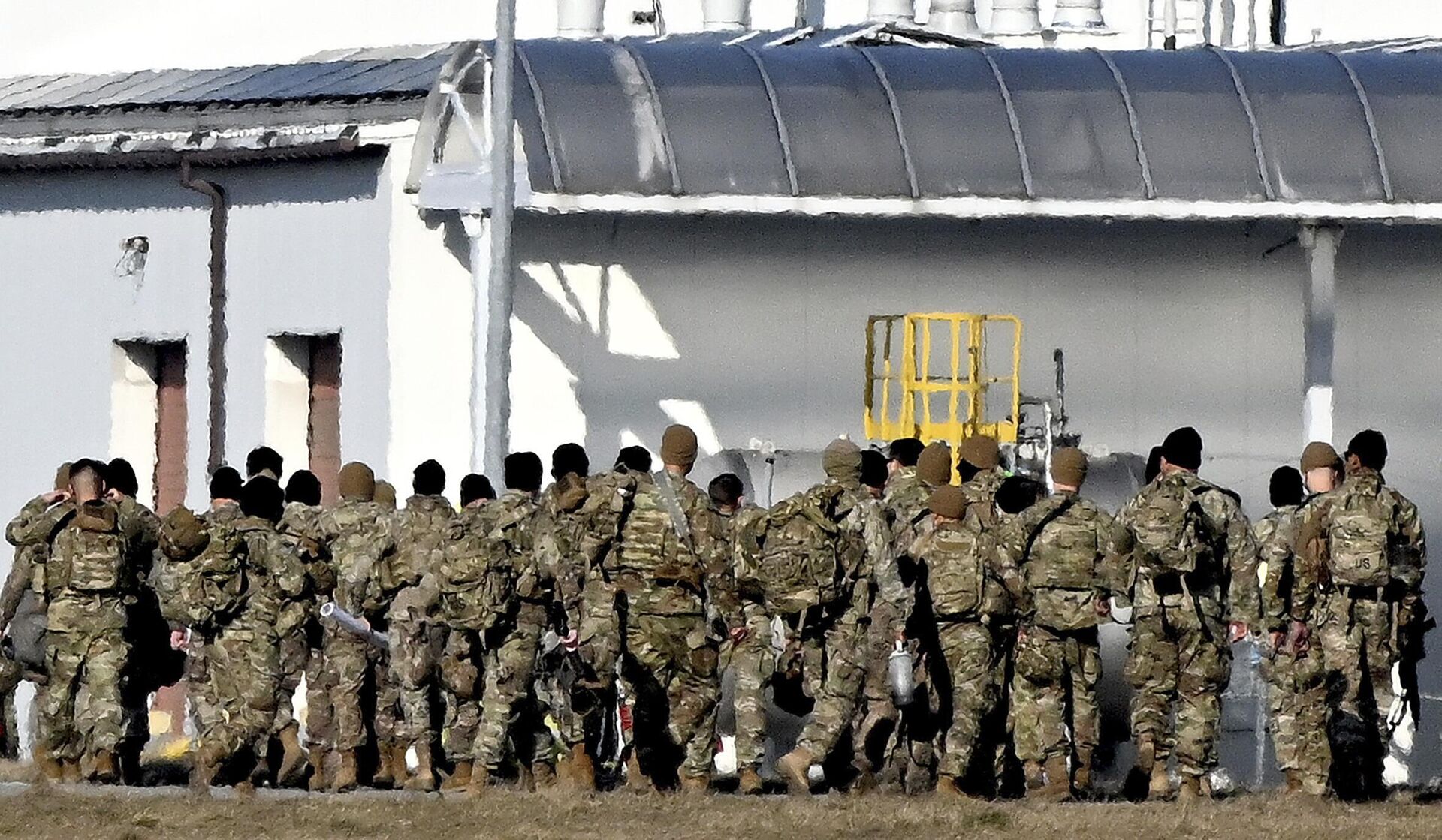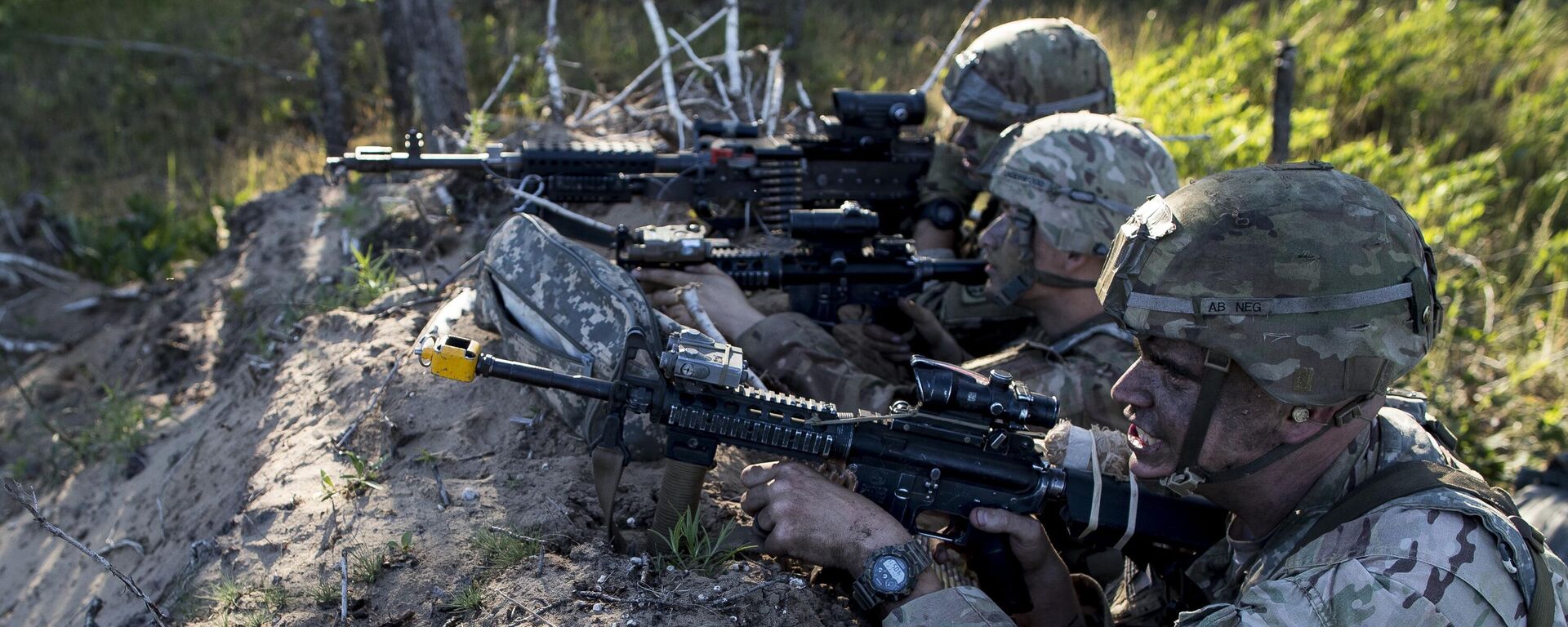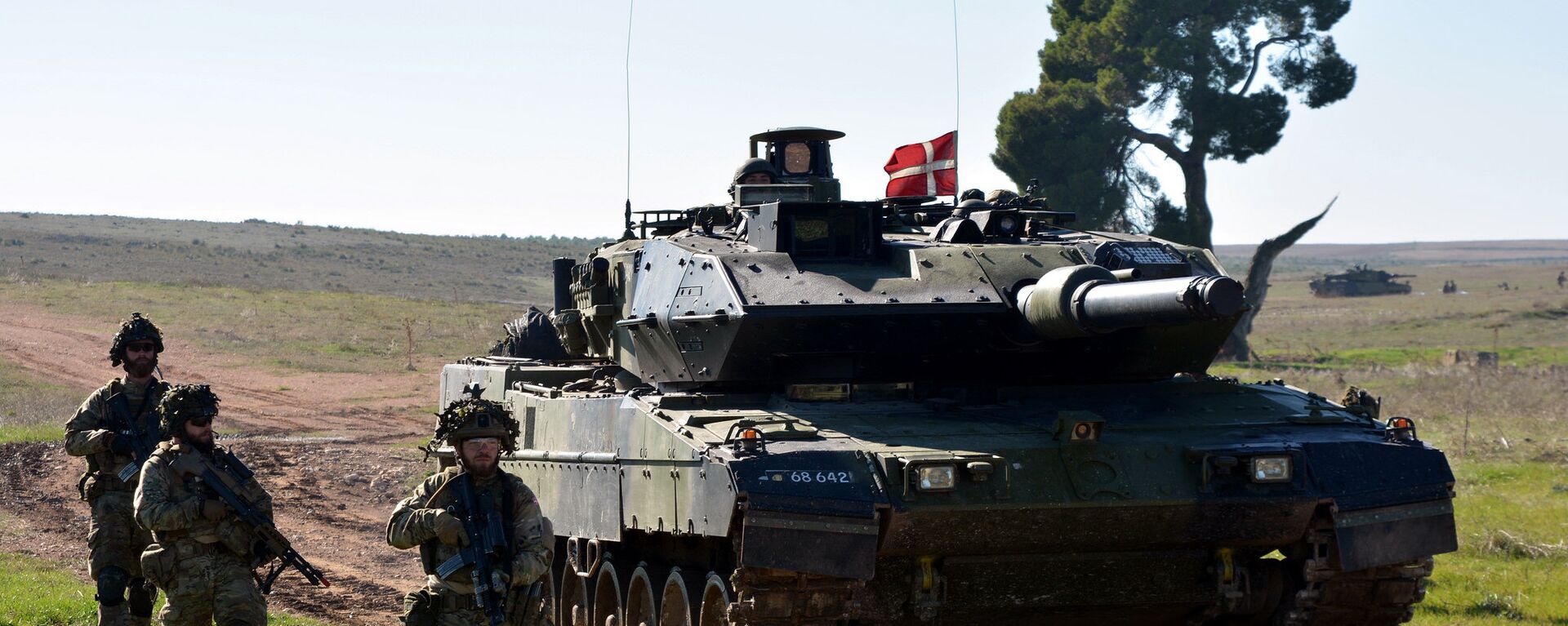US May 'Still Need More' Troops in Europe After ‘Ukraine-Russia Scenario’, Says Top American General

© AP Photo / Mindaugas Kulbis
Subscribe
Days after Moscow began its special operation to "demiliarise and de-Nazify" Ukraine on 24 February, in testimony before a House committee, Mara Karlin, a senior Pentagon official who oversaw the 2021 review of the US Department of Defense’s worldwide military presence, said that it would need to be reconsidered to “ensure deterrence of Russia.”
The American military could “still need more troops” in Europe even after the Russian special operation to "demilitarise and de-Nazify" Ukraine has ended, believes Gen. Tod Wolters, commander of US European Command.
Wolters acknowledged this at a Senate Armed Services Committee hearing on Tuesday, sharing his "suspicion” of a need for a bulked-up US military presence, while declining to specify whether that would mean permanent basing.
"What we need to do from a US force perspective is look at what takes place in Europe following the completion of the Ukraine-Russia scenario and examine the European contributions, and based off the breadth and depth of the European contributions, be prepared to adjust the US contributions," said the general.
Wolters was responding to a question from Sen. Roger Wicker, R-Miss., who asked whether the United States ought to station more troops permanently in Europe, particularly in the Baltics, instead of the current practice of employing rotating forces.
"Obviously, there's always a mix between the requirement of permanent versus rotational, and there are pluses and minuses of each one… We'll have to continue to examine the European contributions to make a smart decision about where to go in the future," elaborated Gen. Tod Wolters.
‘Temporary’ US Reinforcements
Under the Founding Act on Mutual Relations, Cooperation and Security between NATO and the Russian Federation, signed in Paris, France, in 1997, the alliance would not undertake any “additional permanent stationing of substantial combat forces” in the east of Europe, well as from placing nuclear weapons in the region.
However, in recent months, amid Russia’s operation in Ukraine, started after the Donetsk and Lugansk People’s Republics (DPR and LPR) appealed for help due to increasing attacks from Kiev forces, US military forces under Wolters' command have grown from about 60,000 to 102,000 as of Tuesday, confirmed the general.

U.S. Army troops of the 82nd Airborne Division just after arrival at the Rzeszow-Jasionka airport in southeastern Poland, on Tuesday, Feb. 15, 2022
© AP Photo
On 28 March, the Pentagon announced the deployment of six Navy EA-18G Growlers electronic attack aircraft, accompanied by about 240 troops, to Germany. This comes as earlier this year an armored brigade of the 1st Infantry Division, totaling about 4,000 soldiers, was sent to Germany, a similar-size infantry brigade of the 82nd Airborne Division was dispatched to Poland.
Defense Secretary Lloyd Austin also sent F-35A fifth-generation stealth fighter jets to bolster NATO’s “Eastern Flank” and as many as twenty Apache attack helicopters to the Baltic States.
All of these reinforcements have been billed as temporary, with American military and administration officials assuring that no US troops would enter Ukraine.
When recent remarks by US President Joe Biden in Poland were interpreted by many as a hint at a potential deployment of US forces to Ukraine, Gen. Tod Wolters was forced to deny some of the dubious claims made by the POTUS.
Thus, at Tuesday’s US Senate Armed Services Committee hearing, Wolters dismissed claims that Americans are training Ukrainian troops in Poland.
"I do not believe that we are in the process of currently training military forces from Ukraine in Poland", stated the European Command (EUCOM) head.
He confirmed there are "liaisons that are there", and "they're being given advice, and that’s different".
Currently, there are over 10,000 American troops stationed in Poland.
Wolters' comments followed President Biden's remarks in Poland on Monday, when POTUS responded to a reporter's question about his comments, made when meeting paratroopers from the US Army's 82nd Airborne Division last week in Poland.
At the time, in an apparent gaffe, Biden had implied that US forces would be going to Ukraine. At Monday's press conference, in an attempt to double back, the American President denied he had meant that, saying that he was "referring to being with, and talking with, the Ukrainian troops that are in Poland".
US troop deployments to Eastern Europe come as earlier in the month, during a testimony before a House committee just days after Russian President Vladimir Putin announced the beginning of the special military operation in Ukraine, a senior official who oversaw the 2021 Pentagon review of its worldwide military presence warned it needed to be reconsidered.
Mara Karlin had stated on 1 March that the Pentagon must “ensure that we've got deterrence of Russia and that we can absolutely 150% say that NATO is safe and secure,” not only in connection with the developments in Ukraine, but “for the longer term.”
Let's stay in touch no matter what! Follow our Telegram channel to get all the latest news: https://t.me/sputniknewsus





